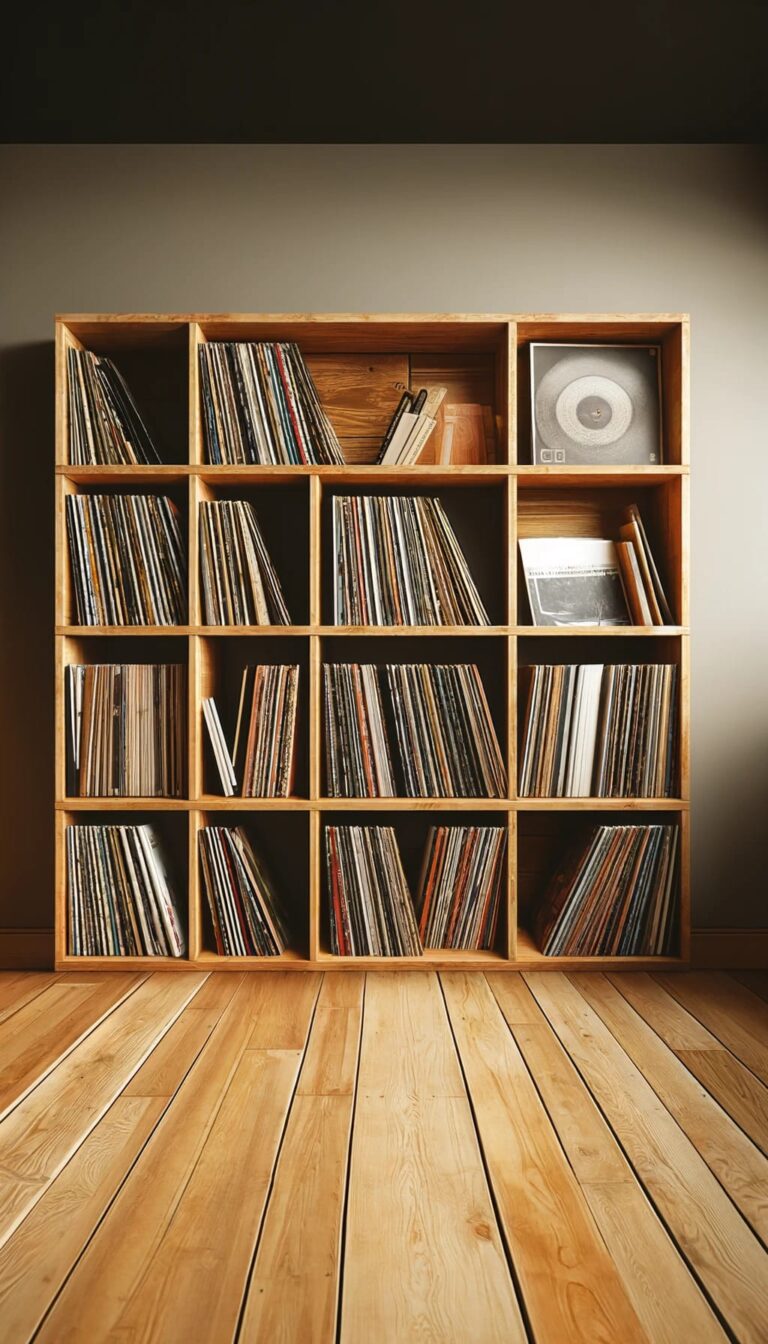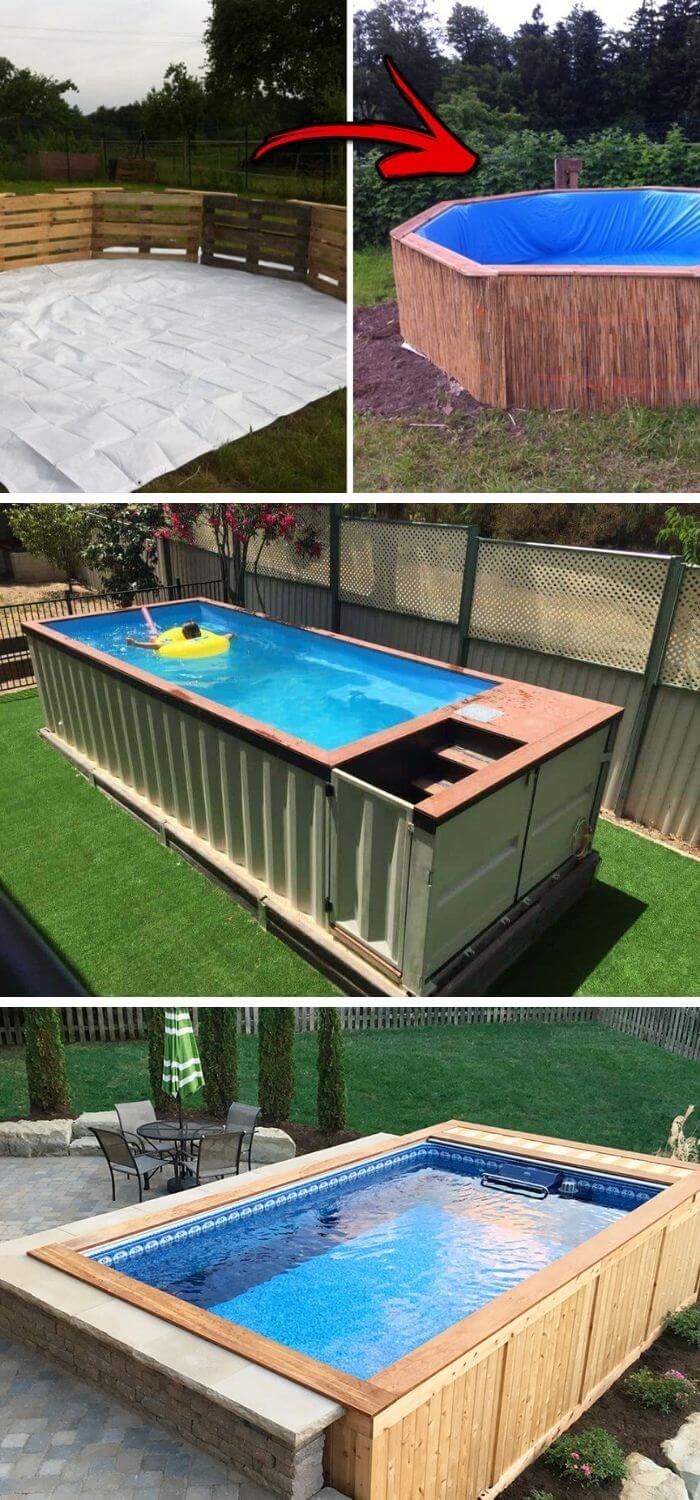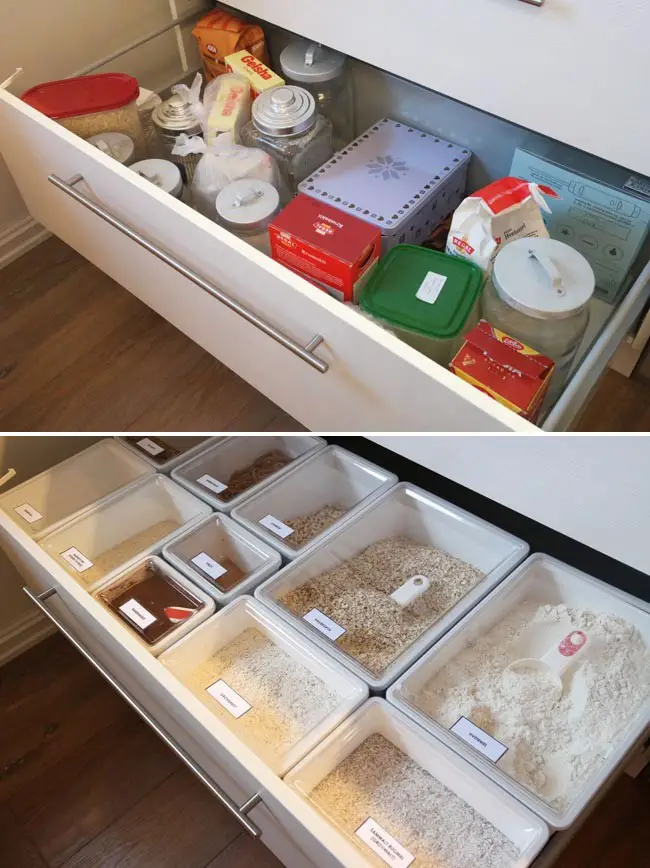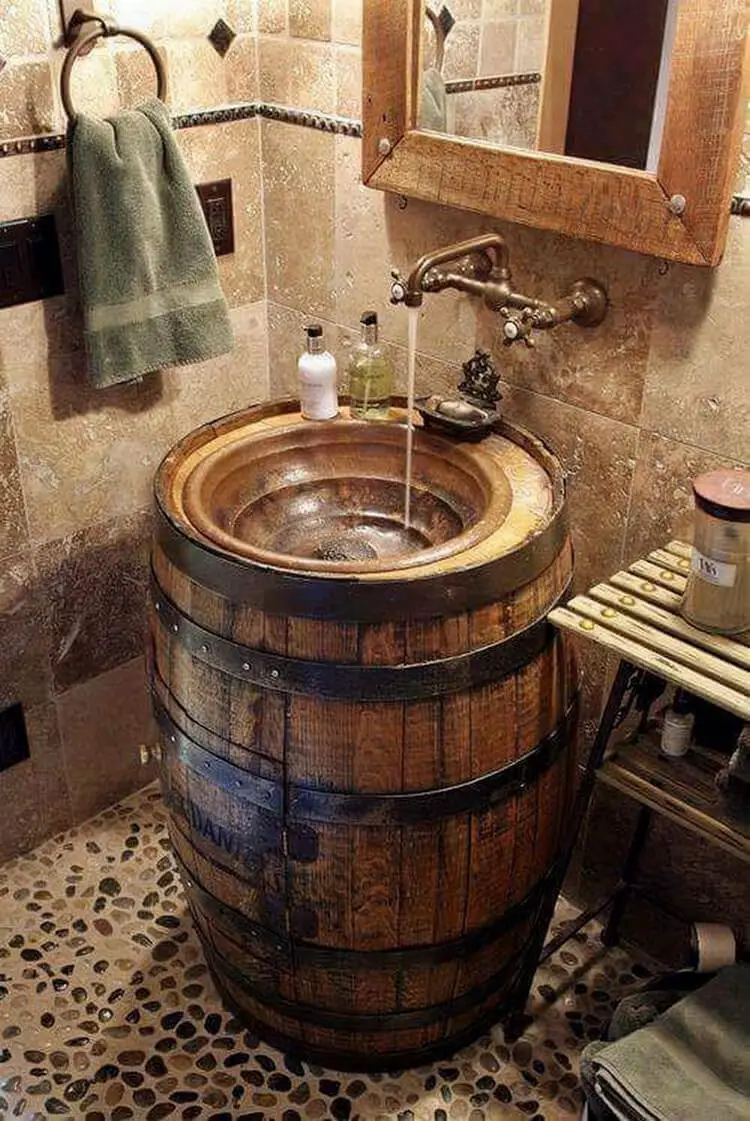What Color Accent Wall Goes With Gray? (16 Options)
When it comes to choosing an accent wall color to pair with gray, there are countless options to consider. While personal preference plays a significant role in this decision, certain colors tend to complement gray walls particularly well. In this article, we’ll explore some of the best accent wall colors that can help you create a cohesive and visually appealing space.
From bold and vibrant hues to more subtle and muted tones, we’ll provide guidance on how to choose the right color for your unique situation. Whether you’re looking to add warmth, contrast, or harmony to your gray walls, we’ve got you covered. So, let’s dive in and discover some of the most popular accent wall colors that can elevate your space!
Best accent wall colors to pair with gray
Black accent walls
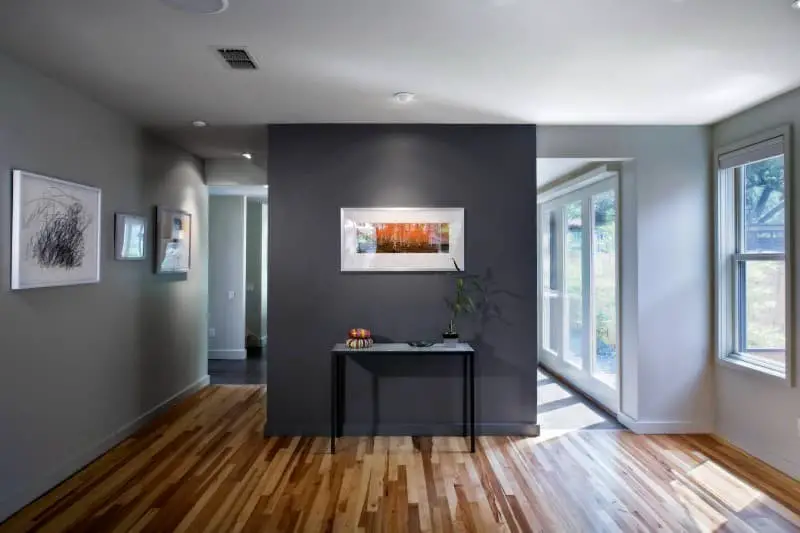
When it comes to gray walls, incorporating black accent walls can create a striking visual contrast that instantly elevates the space. For those seeking a dramatic look, black is an excellent choice, as it adds depth and sophistication. Nevertheless, it’s crucial to balance out the boldness of black with lighter, neutral hues elsewhere in the room, lest the overall aesthetic become too overwhelming.
Blue accent walls
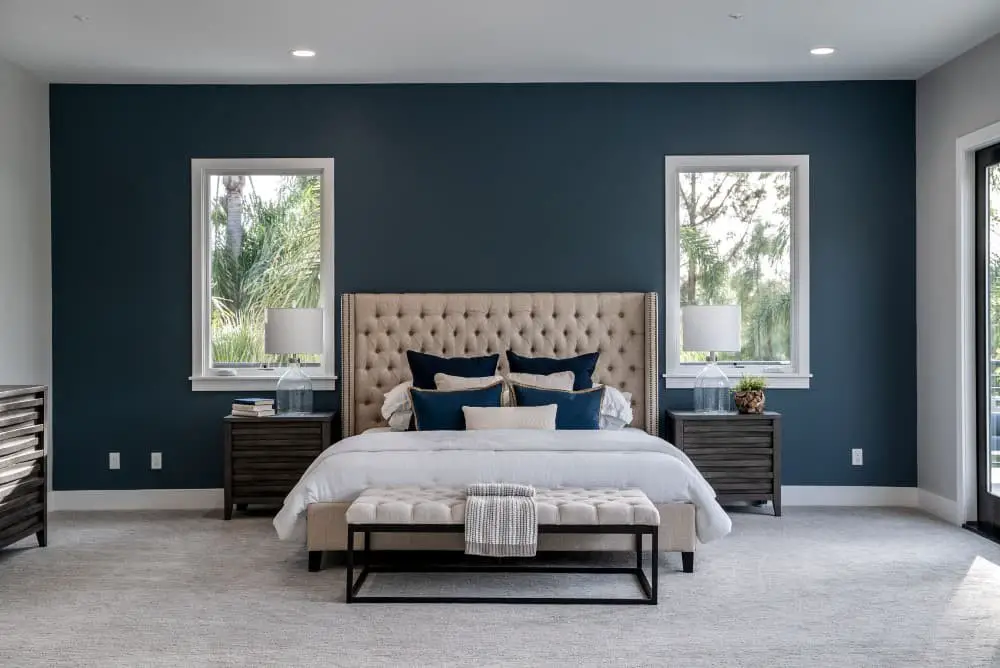
In gray rooms, blue accent walls are often sought after for their calming and serene ambiance. By incorporating this design element, homeowners can effortlessly add depth and texture to the space. The palette of blue accent wall colors is vast, encompassing navy blue, royal blue, turquoise, sky blue, as well as various shades of green.
While these hues provide a striking contrast that can make the room truly pop, it’s crucial to strike a balance between color in your room before committing to an entirely blue accent wall. This ensures the space remains harmonious and visually appealing.
Brass accent walls
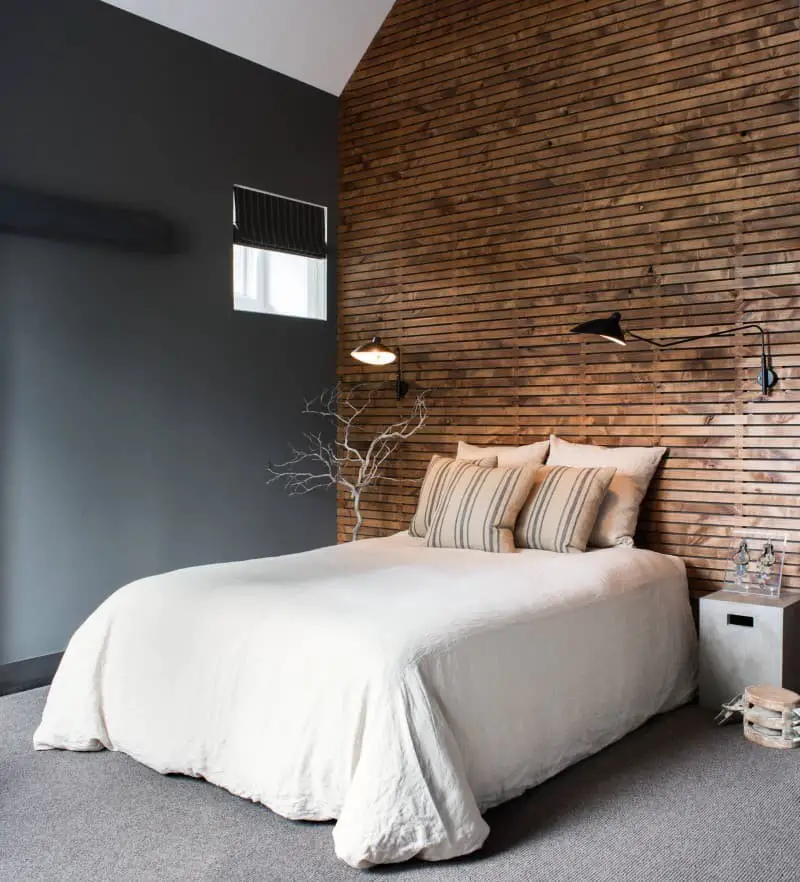
Transforming a gray space into a warm and inviting atmosphere is as simple as incorporating a brass accent wall. This design element offers an unparalleled texture that can significantly elevate the aesthetic appeal of your room. By introducing gold, yellow, or orange hues to your gray space, you can create a stunning contrast that adds depth and visual interest.
For those seeking to inject a burst of color into their gray room, selecting one of these vibrant colors for your accent wall is an excellent way to achieve this effect.
Brown accent walls
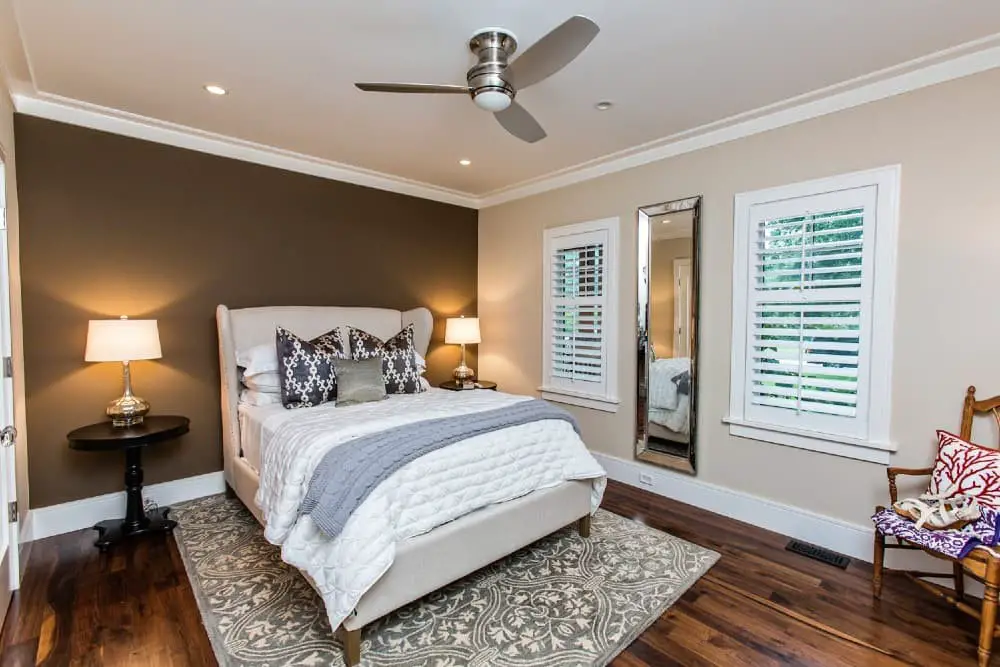
When it comes to gray rooms, incorporating a brown accent wall can be an excellent way to create a cozy and inviting atmosphere. This versatile hue can be paired with a wide range of colors, but its warm tones are particularly well-suited to combination with red, orange, or yellow hues. For a timeless look, consider embracing the classic charm of a brown accent wall – it’s a foolproof choice that’s sure to bring warmth and depth to your gray space.
Cerulean accent walls
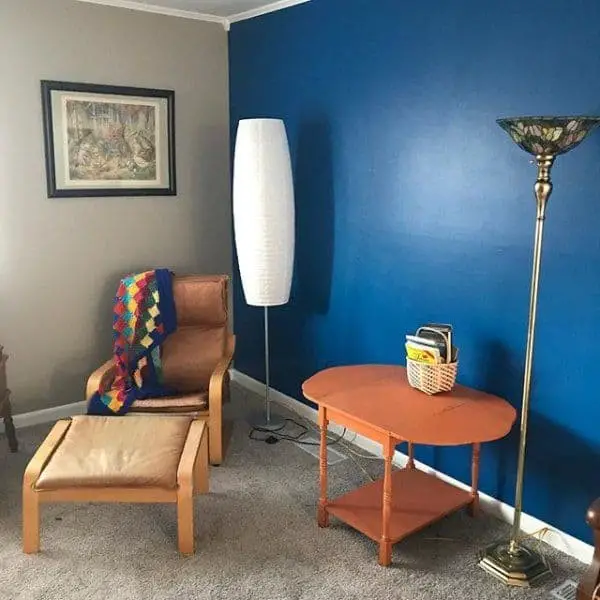
Cerulean accent walls offer a simple yet effective way to add visual interest to gray rooms. This versatile color can be paired with various hues, but its boldness is truly enhanced when combined with complementary colors like orange or yellow. By incorporating cerulean into your design, you can easily inject some much-needed life into a space that might otherwise feel monochromatic. For those seeking inspiration, consider the following: incorporating cerulean accent walls into your gray room.
Cobalt accent walls
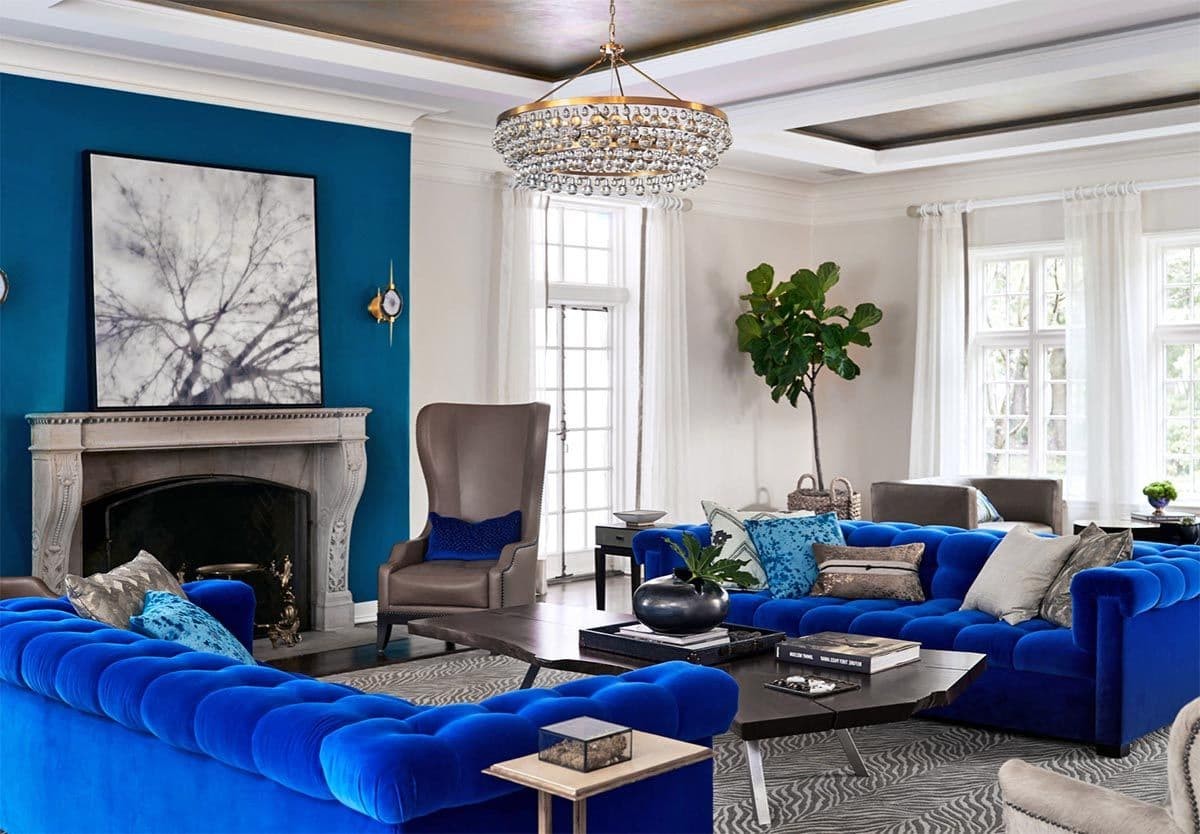
When it comes to adding depth and sophistication to a gray room, cobalt accent walls are an excellent option. This versatile color palette features a range of hues, including rich blues, vibrant violets, regal purples, and revitalizing greens, each capable of elevating the space with its unique character.
Gold accent walls
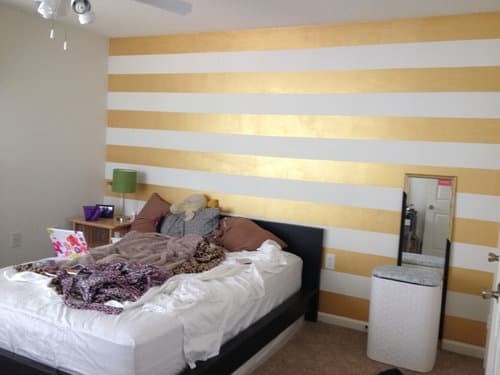
Incorporating gold accent walls into a gray room can add a touch of warmth and sophistication. The vibrant hues of gold, which range from yellow to orange, red, pink, and bronze, can help create a sense of luxury and coziness in the space. For a classic look, opt for traditional gold tones that will complement the neutrality of the gray walls.
Green accent walls
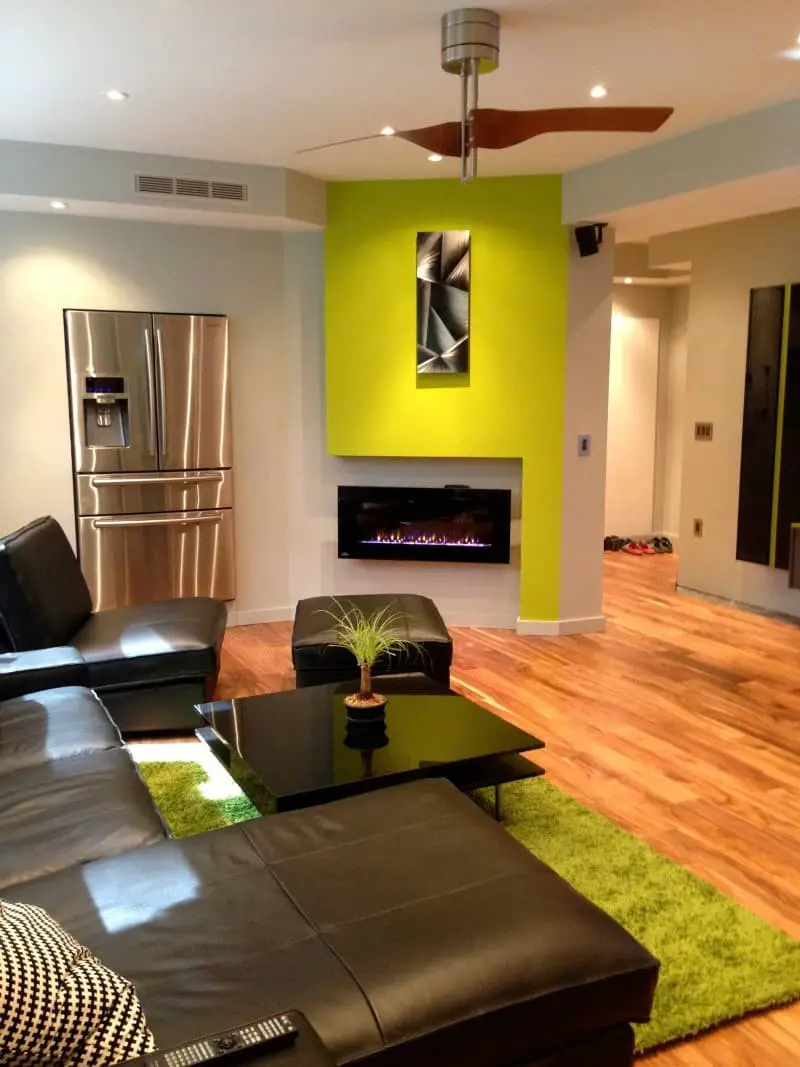
For gray rooms, incorporating green accent walls can be a fantastic way to inject some natural freshness into the space. The range of green hues available, from olive to hunter, mint, and lime, offers plenty of options for adding a calming atmosphere or a pop of energy, depending on your desired ambiance.
Navy accent walls
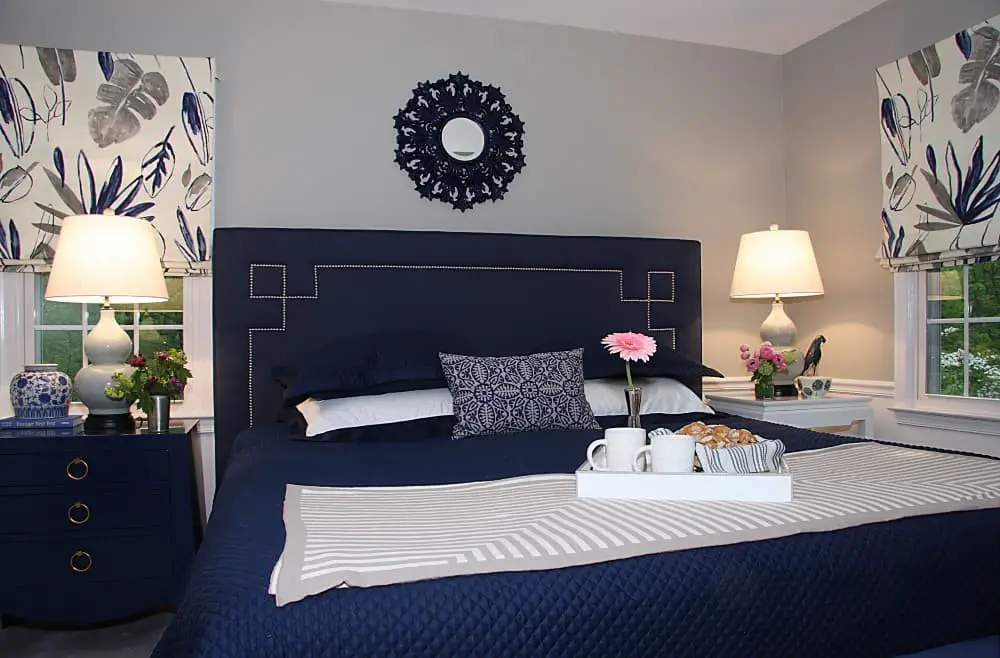
Transforming a dull gray room into a vibrant oasis is as simple as incorporating a navy accent wall. This bold design choice can instantly add warmth and personality to the space, making it feel more welcoming and alive. What’s more, navy’s versatility ensures that it will harmoniously complement a wide range of colors, allowing you to experiment with various combinations to find your perfect match.
Orange accent walls
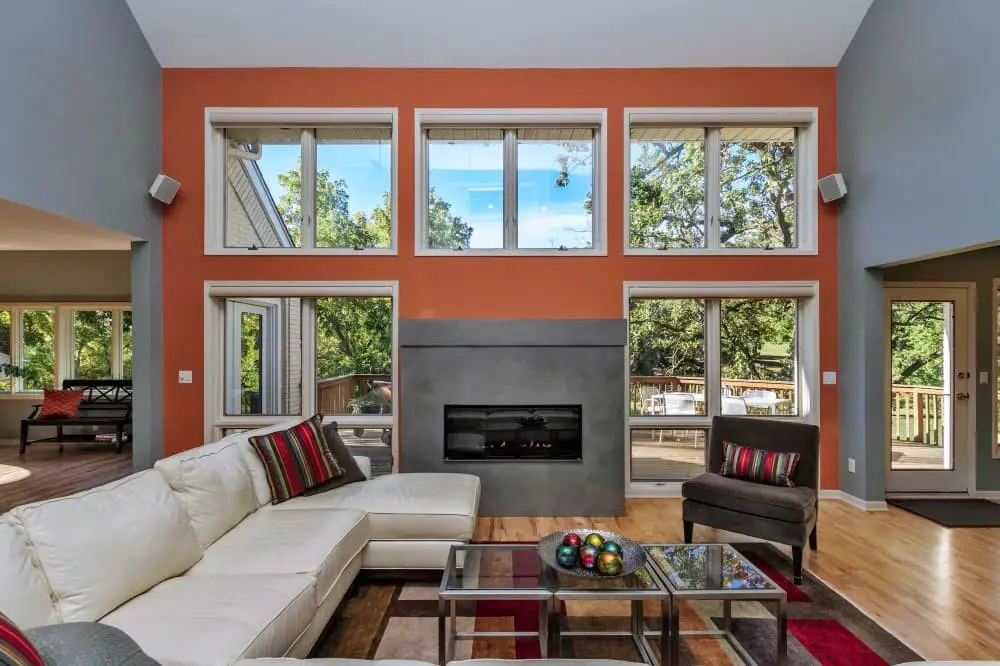
Transforming a dull gray room into a vibrant oasis is just a splash of color away! Consider painting one wall in a stunning shade of orange to inject warmth and coziness into the space. Not only does this bold move create a striking visual focal point, but it also has the power to brighten up the entire room, filling it with an uplifting energy that’s hard to resist.
Pink accent walls
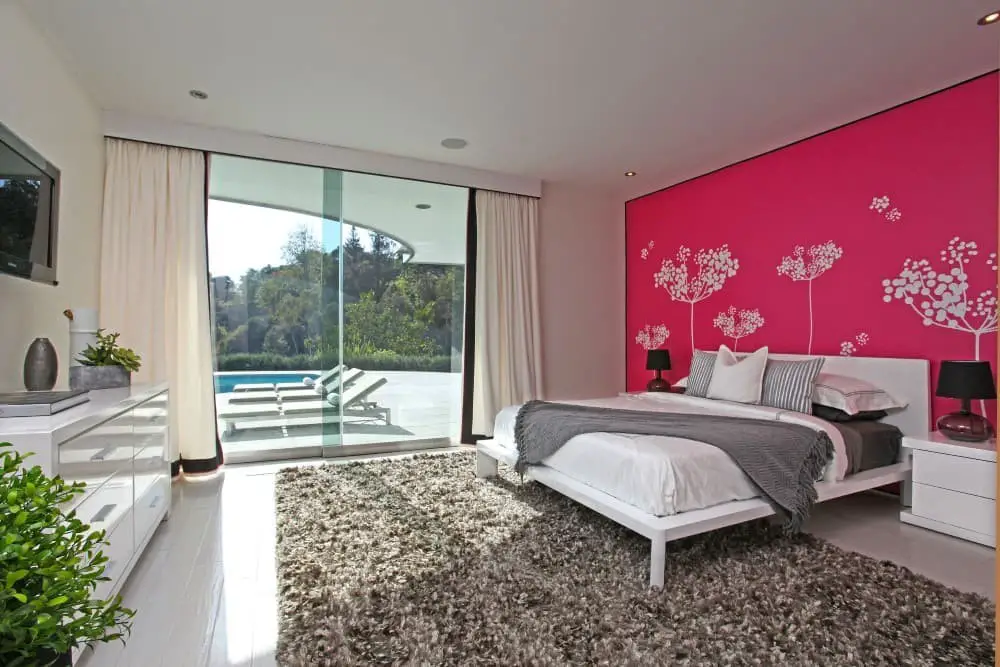
A pink accent wall boasts versatility, effortlessly complementing both modern and traditional spaces. Its adaptability makes it suitable for various rooms, including bedrooms, living rooms, and dining areas. For a bolder yet still rosy alternative to an all-pink accent wall, consider dusty rose or salmon shades. These colours bring warmth and femininity to any room without being overwhelming.
Rose accent walls
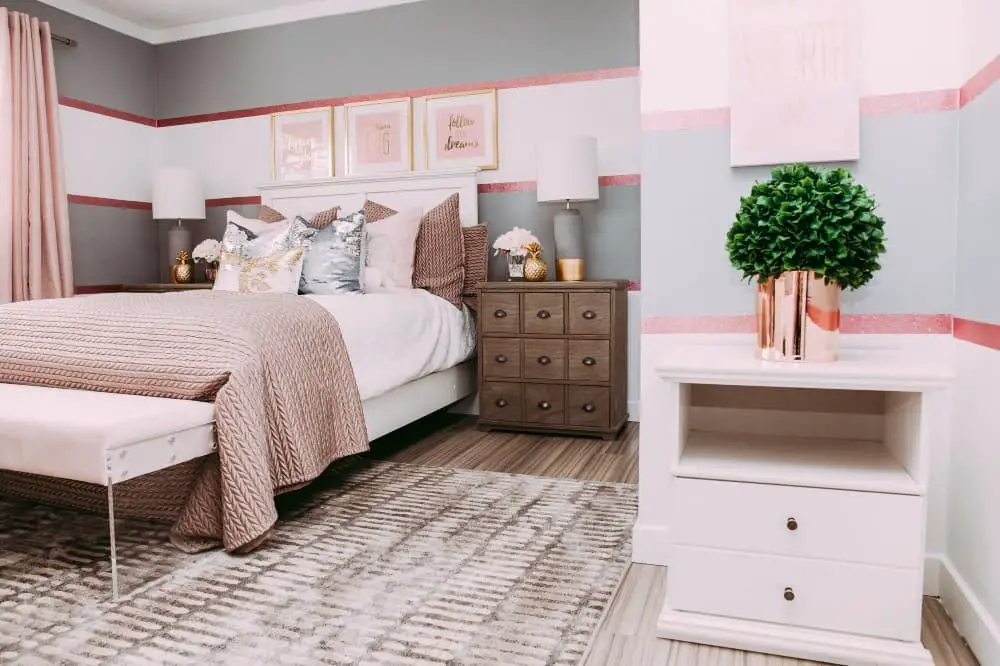
For those seeking a more subtle approach, consider introducing a pop of color through an accent wall featuring rose gold or blush tones. These soft pink hues bring warmth to the space without being overwhelming, making them a versatile choice that can be harmoniously paired with a variety of colors, including calming blues and invigorating greens.
Sapphire accent walls
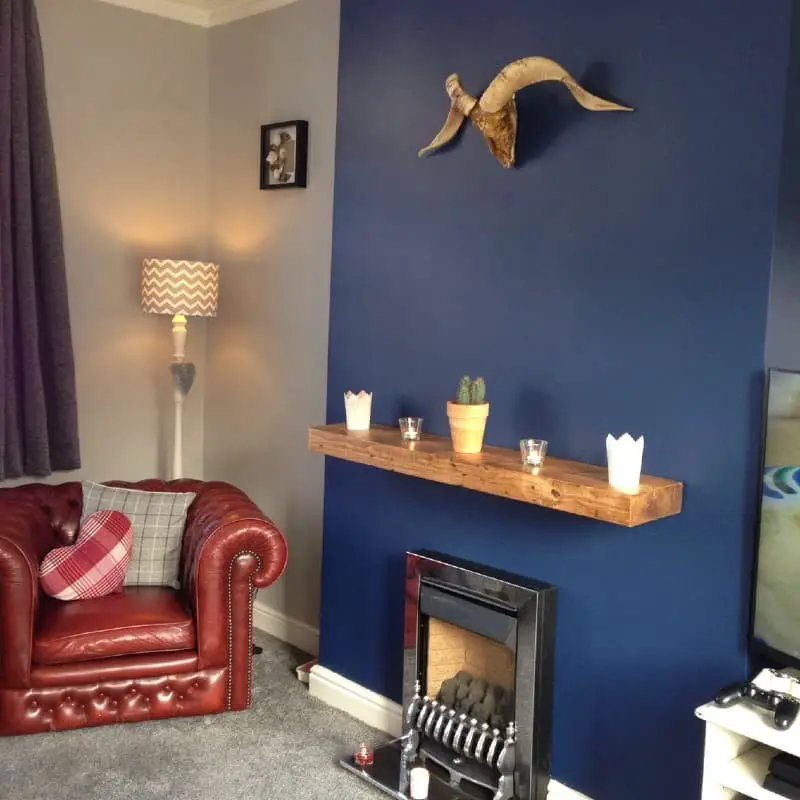
For a statement-making design without overwhelming the senses, sapphire accent walls are an excellent choice. By opting for this bold yet muted hue, you can create a focal point in the room that doesn’t overpower other design elements. To truly make the most of this unique shade, consider avoiding additional colors and allowing the sapphire to be the dominant feature. This approach will ensure the space remains balanced while still showcasing your personal style.
Taupe accent walls
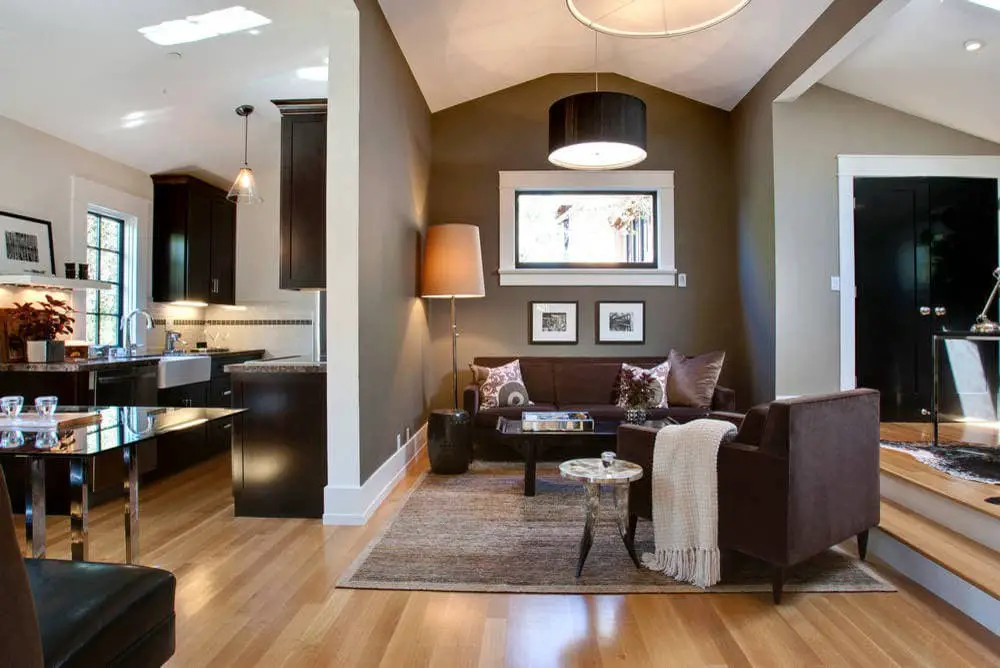
Taupe’s versatility makes it an excellent choice for accent walls, as it harmonizes seamlessly with both warm and cool tones. This understated color can be effectively used in various rooms, including the bedroom, living room, and kitchen, without dominating the space. To add depth and visual interest to your accent wall, consider incorporating different textures or patterns.
White accent walls
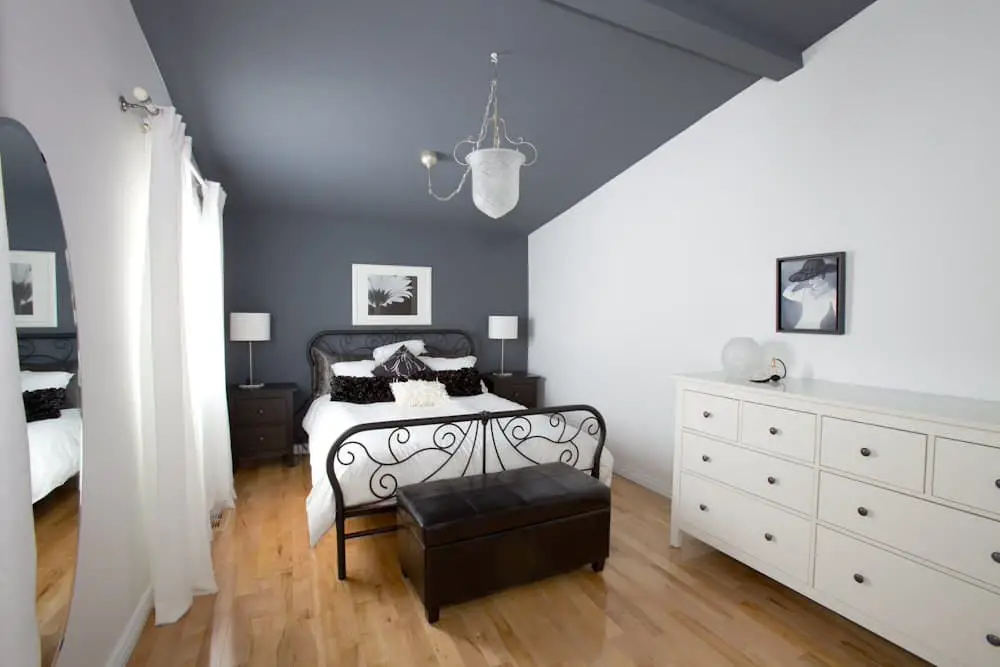
White accent walls have become a staple in many homes, serving as a versatile design element that can instantly brighten up a space and foster a sense of openness. Yet, when a room is already dominated by white hues, it’s worth considering an alternative accent color to add some visual interest and depth.
Yellow accent walls
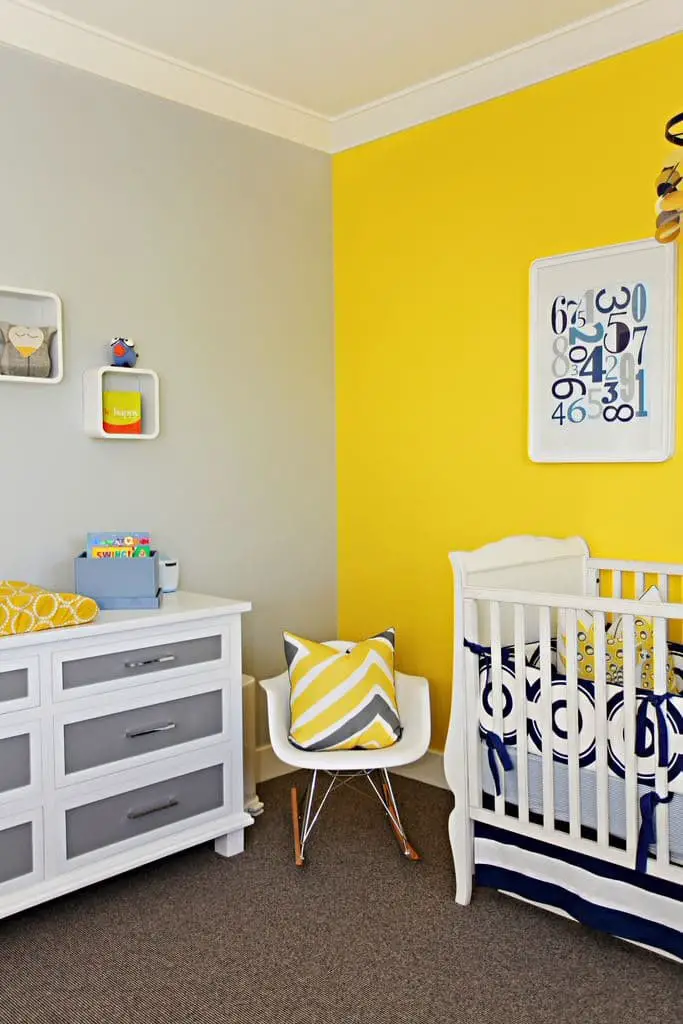
Adding a pop of color to your interior design can make all the difference. Yellow accent walls are particularly effective at introducing warmth and cheerfulness into any room. Moreover, this vibrant hue is equally impressive when paired with neutral tones like gray. A harmonious combination that yields stunning results is achieved by balancing light yellow accent walls against dark gray surfaces.
What color accent wall goes with gray furniture?
When incorporating gray furniture into your design, selecting an accent wall color that harmonizes with it is crucial. For a dramatic and refined appearance, consider bold options like black, navy blue, or dark green. These hues can add depth and sophistication to any room. If you prefer a more understated approach, soft pink or beige accents can provide a delicate contrast to the gray furniture, creating a balanced look.
Which accent wall color is best for a bedroom?
Bedrooms offer the perfect canvas for experimenting with accent walls. While most rooms require a more neutral palette, bedrooms provide the freedom to get creative with color choices. For a calming retreat, we recommend considering hues like blue, green, or purple. These soothing shades can help create a peaceful atmosphere in your bedroom, making it the ideal space to unwind and recharge.
What color accent wall goes with gray floor?
When it comes to gray flooring, the options for accent walls are slightly more restricted compared to other flooring colors. Nevertheless, black and dark brown are two outstanding choices that can create a stunning visual effect in any room. For a more dramatic look, these darker hues will create a striking contrast with the gray flooring. If you prefer to introduce some contrast to your space instead, consider light blue or pale pink accent walls.
These softer colors can help brighten up the room and make it appear larger than it actually is.
What accent color goes with gray walls and brown furniture?
When it comes to gray walls, a pop of color can be just what’s needed to bring your space to life. Consider bold options like red or orange to add a dash of excitement, or opt for more understated choices like tan or beige to create a cozy and inviting ambiance that complements brown furniture.
What color accent wall goes with gray in living room?
When it comes to selecting the perfect accent colors for your living room, blue and green hues are often top choices. These calming shades can effortlessly create a serene atmosphere, ideal for hosting friends and family or cozying up with loved ones for movie night. For an added pop of contrast, consider swapping out gray accents for bold red walls. Alternatively, if you prefer a more understated approach, beige or tan accent walls offer a warm, inviting alternative.
What accent color goes with gray and black?
When it comes to adding personality to a room with neutral-colored walls like gray, introducing bold accent hues can work wonders. Consider incorporating vibrant shades like red, orange, or yellow, which can inject a sense of energy and warmth into the space.
What color accent wall goes with light gray?
When it comes to choosing complementary colors for light gray accent walls, you have a range of options. For a soft and calming look, consider pairing your gray with pale pink or peach hues. Alternatively, you could opt for softer shades like light olive green or mint green for a natural and effortless feel. If you want to add some elegance and sophistication to the space, muted lavender or purple colors can be a great choice.
Finally, if you’re looking for a fresh and airy vibe, light blue shades such as baby blue or powder blue are also worth considering.
What accent wall goes with gray carpet?
When it comes to accentuating your space with a statement wall, the key is finding harmony between the color and surrounding elements. For darker accent walls, a grey carpet can be an excellent choice as it allows the gray tone to take center stage. In contrast, when working with lighter accent walls, a lighter shade of accent wall tends to produce a more cohesive look.
What colors compliment gray walls?
When it comes to pairing accent colors with gray walls, there’s a range of options that can add depth and visual interest. For instance, bold hues like deep reds, blues, and yellows can create a striking contrast, while warmer tones such as orange or pink can introduce a sense of playfulness. The key is finding the right combination that complements the gray backdrop without overpowering it.
How to choose the right color for the accent wall?
When selecting an accent color, it’s crucial to harmonize with the existing palette in the room. A dark accent wall complements a vibrant atmosphere, while a light accent wall pairs well with neutral tones and subtle pops of color. Regardless of your chosen hue, ensure it aligns with the overall aesthetic of your home. For a understated yet stylish accent wall, consider soft blues or pale pinks. These gentle hues add personality to the space without overwhelming the senses.
Remember to balance these colors with complementary decor to prevent visual dissonance. Alternatively, opt for bold oranges or reds if you desire a more dramatic statement. These vibrant shades command attention and create a lasting impression on anyone entering the room. You can even combine them for a truly one-of-a-kind look.
Related Posts
When it comes to selecting the perfect color combination for your home’s exterior or interior, one crucial consideration is ensuring that different elements complement each other. This is especially true when pairing colors with specific architectural features like garage doors, ceilings, and bedding. For instance, a yellow house demands a carefully chosen garage door color that won’t clash with its sunny hue.
Similarly, a gray headboard requires harmonious bedding colors to create a cohesive look. In this sense, understanding what colors go well together is essential for achieving curb appeal or stylish interiors. By considering the undertones and tones of different hues, you can make informed decisions about how to pair them effectively.
Whether it’s selecting a ceiling color that complements alabaster walls or choosing curtains that match gray furniture, having a guide on what colors work well together can be invaluable in creating a beautiful and harmonious space.

